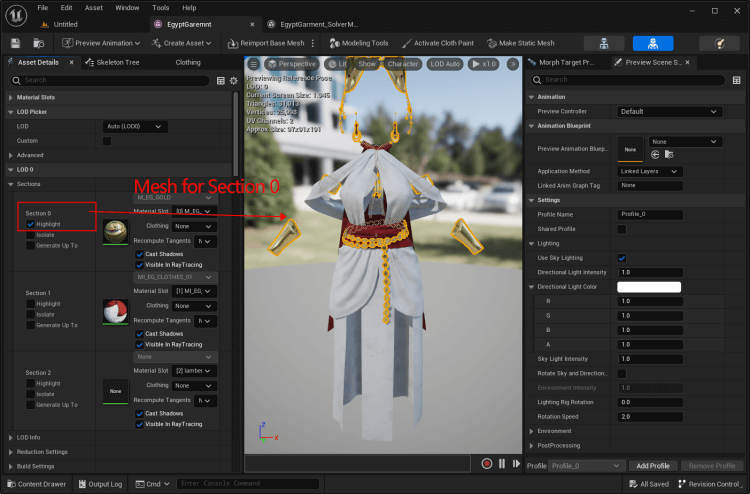Mesh Proxy
发布于:2024-11-21
Function Description
Supports driving High Polygon Models (HPM, rendering meshes) with Low Polygon Models (LPM, solver meshes)
Suitable for the simulation of garments and accessories with complex surface structures.


Operation Process:
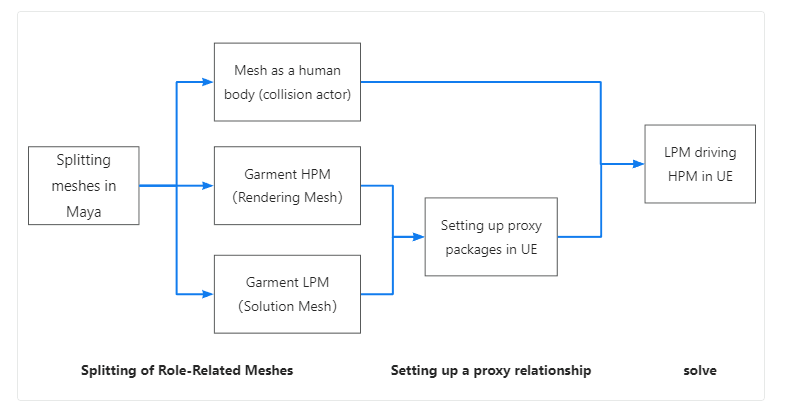
1. Creating Low Polygon Model solution meshes
Low Polygon Model solution meshes can be created in two ways: in Atelier or DCC.
1.1. Create in the Atelier
Import the High Polygon Model of the character and garment into the Atelier, and make the solution mesh about the HPM.
Add constraints such as sewing and false sewing to ensure that the shape of the mesh is stable during the simulation and that there are no problems such as falling off and losing light.
Physical properties and process settings are added and adjusted to the normal garment process.
Adjust the mesh pattern to be close to the HPM pattern.
After ensuring the mesh shape is close to the High Polygon Model, arrange the UV and export the SMD.



1.2. Create in Maya
In Maya, you can take the retopologized garment mesh, delete the back and side mesh, and keep the outside mesh as the solution mesh.
The solution mesh retains the skin information and is imported into UE as FBX.
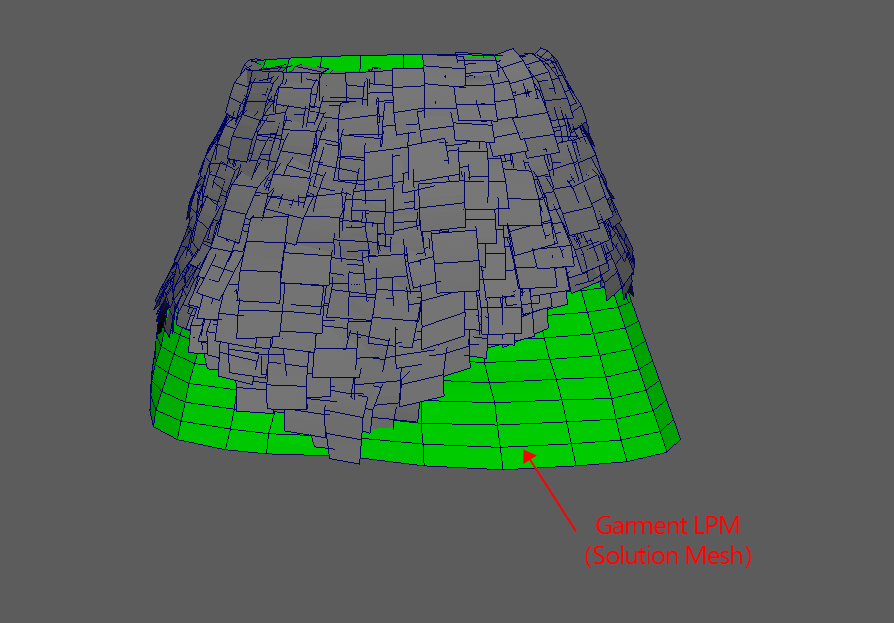
1.3. Solution mesh specification
The contour shape is close to the High Polygon Model rendering mesh.
Mesh density distribution is the same as the High Polygon Model.
2. Setting up an agent
2.1. Import solution mesh and rendering mesh in UE
Import the solution mesh created in the previous step into UE to generate Style3D garment assets.
The solution mesh obtained from retopology in DCC is converted to Style3D asset by a generic mesh solved in UE Link
The solution mesh in Atelier is imported into UE as SMD, and it is automatically a Style3D garment asset.
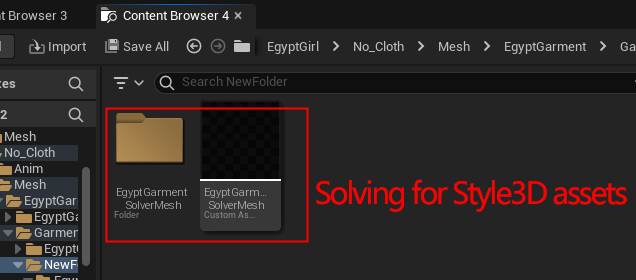
Import the HPM garment mesh into the UE to generate a HPM skeletal mesh.

2.2. Configuring the Agent
Double-click on the Style3D solution mesh to go to the garment panel and configure the mesh for rendering in the Render Proxy (High Polygon Model garment skeletal mesh actor)

Control parameter
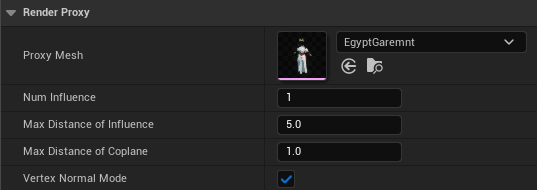
Parameters | Connotation |
Proxy Mesh | High Polygon Model garment skeletal mesh actor for rendering, referenced from the UE Resource Browser |
Num Influence | Number of HPM rendering mesh vertices affected by a solving mesh vertex |
Max Distance of Influence | Specifies the region where the wrapping affects HPM vertices. You can increase the value when the solution mesh vertex density is low, and decrease the value when the solution mesh vertex density is high to improve performance |
Vertex Normal Mode | Vertex normal mode maps HPM and LPM based on normal direction defaults on |
Proxy Relationships
After adding a High Polygon Model skeletal mesh actor in the Render Proxy _ Proxy Mesh, the Render Section Wrap Map render group wrap map generates agency relationships based on the closest distance retrieval.

Parameters | Connotation |
Index (Section 0) | The first Index (Section 0) refers to the Section grouping that renders the tall model, which can be found in the skeletal mesh actor interface, Sections.
|
Piece Indices | The Index in Pieces Indices refers to the index of the plate in the solution grid, you can click on the plate in the 3D window in the garment interface, and the attribute column will show the corresponding Index information of the plate.
|
The default agency relationship generated by the system is based on the principle of recent generation, which does not necessarily meet the needs of the proxy, based on which you can delete and modify the corresponding plate Index of the HPM Section.
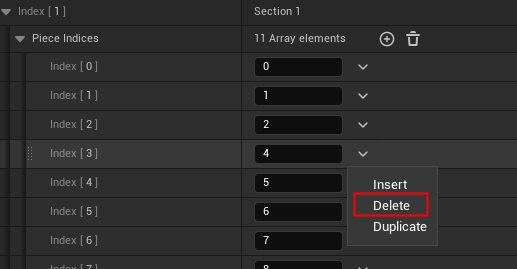
After configuring the proxy relationship, click Bind to perform the binding mask between the HPM and LPM.
2.3. Hide the solution mesh
Undisplay Cloth Pieces in Visibility

Preserving assets.
3. Configure the solution mesh to the Style3D components.
Just configure the Style3D solution mesh assets to the Style3D component and start the simulation!
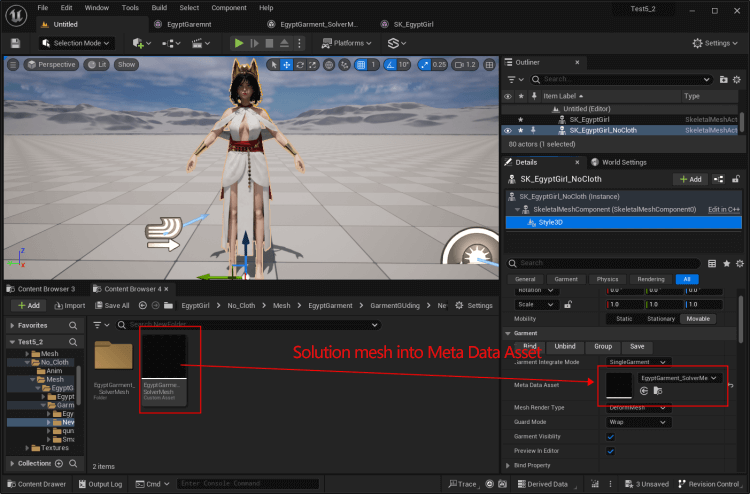
Frequently Asked Questions
1.Does the HPM mesh UV need to be adjusted to fit the solving mesh?
The mesh proxy conveys deformation information in terms of proximity vertices and weights. The UVs of the HPM mesh used for rendering and the LPM mesh used for solving do not need to be the same, and the simulation is not affected by the HPM UV when solving.
Operation Process:

